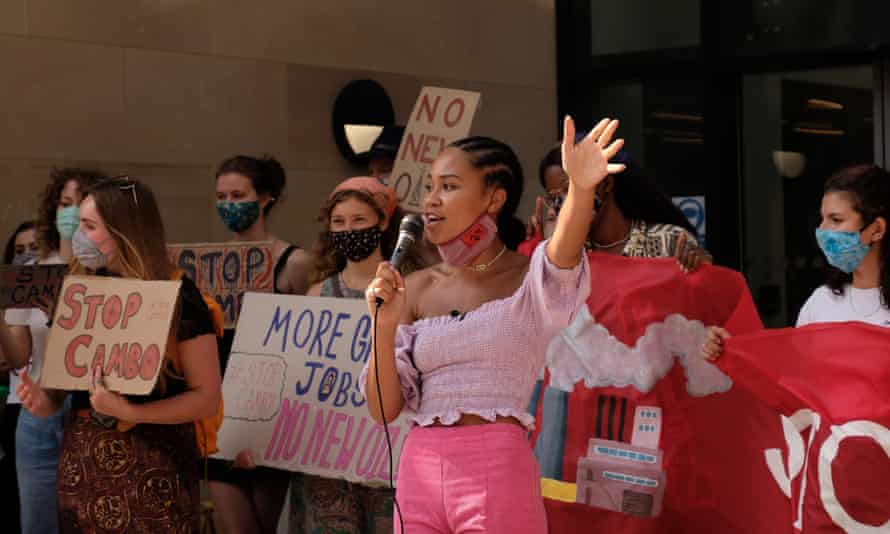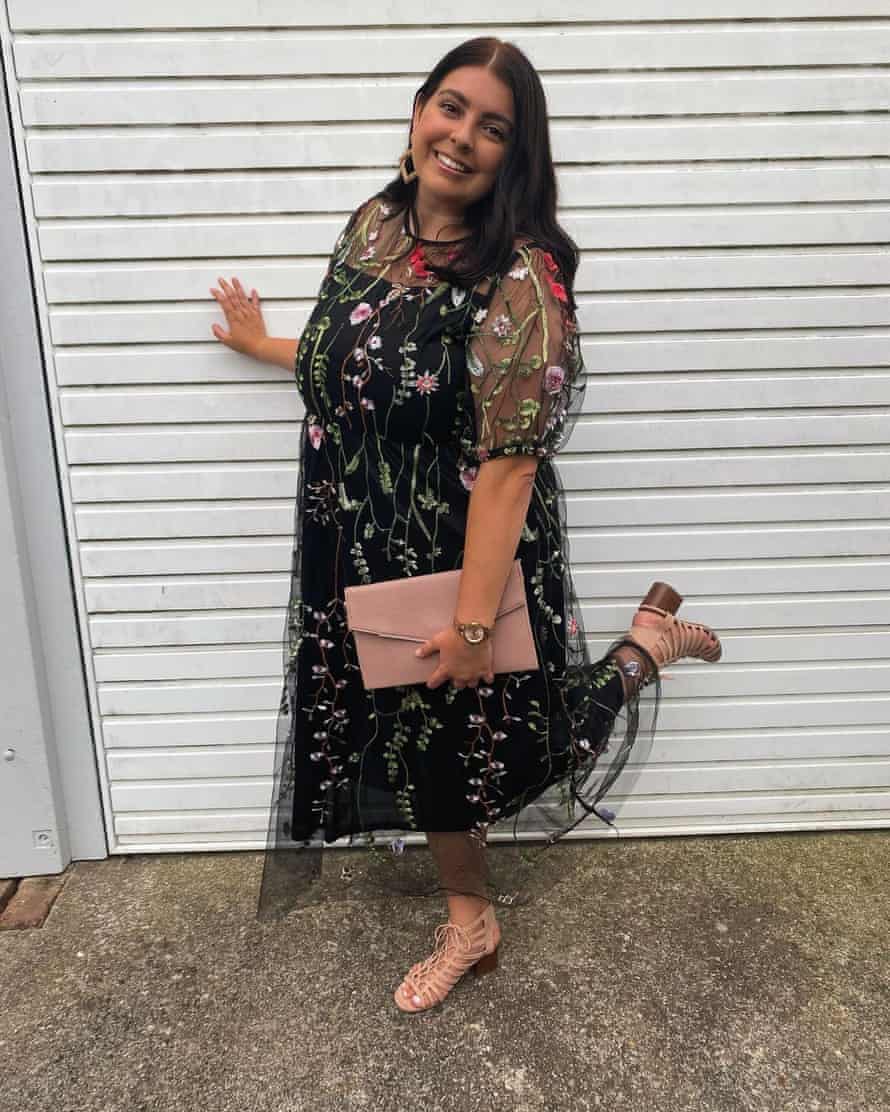Out of style: Will Gen Z ever give up its dangerous love of fast fashion?
As a generation, they care deeply about the environment and sustainability – but are also under pressure to change their wardrobe constantly. Which impulse will win?

Alessia Teresko, a 21-year-old student from Nottingham, seldom wears the same outfit online twice. Which is why, last month, for a friend’s birthday, she bought a minidress: a 70s-style Zara dress in a swirling print, for which she paid GBP27.99. On Instagram, she posted a photograph of herself in her new dress, with a caption that read “Besties wknd”. The post racked up 296 likes and with it, Teresko’s Zara purchase was sent to the giant wardrobe in the sky. (Namely, the Depop account, where she resells the clothes she no longer wears.) “I can’t take another picture in it because I already posted it,” says Teresko. “I know that sounds very superficial.”
In Edinburgh, 23-year-old Mikaela Loach, a student and climate justice activist, understands the pressure that Teresko is under. “Honestly,” she says, “as someone with a platform, even I feel pressure to be wearing different clothes online.” She buys her clothes secondhand. “Only if I can’t find it secondhand,” Loach says, “will I buy something new and then make sure I’ve done rigorous research on the company.”
Just two years and a few hundred miles separate these women, but in their perspectives on sustainability, they might as well be speaking different languages. Teresko and Loach represent a dichotomy within Generation Z that is becoming increasingly pronounced. Whereas Gen Z, a term used to refer to people born between 1997 and 2012, is typically thought of as socially progressive and environmentally aware, it is also a rapacious consumer of fast fashion, one of the world’s most polluting industries, often linked to human rights abuses in the global south.

A 2020 Vogue Businesssurvey of 105 members of Generation Z found that more than half reported buying most of their clothes from fast-fashion brands. Around half the young people they surveyed said that they would continue to purchase from Boohoo, even after learning that workers in Leicester factories that supplied the fast-fashion giant were paid less than GBP4 an hour. Data from the market research firm Mintel suggests that Gen Z out-consumes older generations when it comes to fashion purchases: 64% of British 16- to 19-year-olds admit to buying clothes they have never worn, compared with 44% of all adults surveyed. And yet Mintel data also shows that Gen Z claims to care more about the environmental impact of their purchases: 70% of 16-19-year-olds agree that sustainability is an important factor when purchasing fashion items, compared with just 20% of 65- to 74-year-olds.
How to explain this schism, and the fact that a generation that has given the world Greta Thunberg, the climate change activist who excoriates the fashion industry from the pages of Vogue Scandinavia, also produced Love Island runner-up Molly-Mae Hague, recently announced as the creative director of the ultra-low-cost fast-fashion brand PrettyLittleThing in a rumoured seven-figure deal? “It did seem paradoxical to us, which is why we wanted to shed some light on it,” says Malthe Overgaard, a former researcher at Aarhus Business School. In 2020, Overgaard co-authored a paper with fellow researcher Nikolas Ronholt which surveyed members of Gen Z to find out why they consumed fast fashion while professing to care about sustainability and the environment.
“Young people have this feeling of complexity and ambiguity related to sustainability,” says Overgaard. “They all agreed that they thought of themselves as conscious consumers, but on the other hand, they were incentivised to buy more and consume more because of the need to stay trendy.”
Scott Bowden, 23, a delivery driver from Saltash, has online shopping delivered to his house so frequently that his dad has a running joke with the postman. “The guy who delivers to my house finds it funny how many clothes I’ve ordered,” Bowden says. Bowden estimates he spends around GBP50 a week on clothes, usually from Asos, but occasionally from the ultra-low-cost retailer Shein. Bowden is aware of some of the ethical issues around purchasing fast fashion. “Recently, when all the stuff came out about people [at other companies] not being paid the minimum wage,” he says, “stuff like that makes you feel awful, if it’s true that they are getting paid that little.”
But Bowden is a regular young person, working, seeing his friends, and conforming to the pressure we all feel – young and old – to look fashionable. He is not familiar with the ins and outs of fast fashion’s supply chain. “If it came out that people were being mistreated or underpaid,” says Bowden, doubtfully, “it would make me think twice about buying from a brand.” This, says Overgaard, is a common response among the Gen Z members surveyed. “They feel that they don’t have enough information about the products, and how they are being produced.”
Loach can relate to this sentiment. “When I was at school,” she says, “I’d buy new things all the time and I never really considered the impact of my habits or how harmful the industry was.” What changed for Loach was watching the 2015 documentary The True Cost, which explored the environmental damage and labour violations inherent within the global garment industry. “It was transformational,” she says. But she feels empathy for people who, as she once did, choose not to engage with the reality of fast fashion. “The fashion industry is designed to be exploitative and that opaqueness, the lack of transparency, is what allows it to exist,” says Loach.

Of course, not all young people would stop buying fast fashion if they were forced to confront the reality of the industry they are supporting. Some do know, and choose to purchase anyway. When I ask Teresko if she knows that people are being exploited to make her clothes, she is honest. “I am aware but I don’t really actively think about it,” she says. “If I buy something online, I’m not thinking, ‘that’s fast fashion, I shouldn’t buy it‘. Has she ever felt guilty about buying fast fashion? “I have never felt like that. I only feel guilty if I spend a lot of money.”
Money: when it all comes down to it, this is what keeps the fast fashion water-wheel turning. Every generation of young people has embraced the newest fashions, whether it was the flappers of the 1920s or the hippies of the 1970s. But before the advent of brands such as Boohoo and Missguided, which had the effect of pushing down prices across the entire industry, it was too expensive for young people to buy new clothes every week. Nowadays, GBP3 party frocks and GBP15 tracksuits are routine. “I would rather buy 20 things for GBP50,” Teresko says, “because I feel like I am getting more worth than from two things.”
Social media has intensified the pace at which young people are encouraged to consume. “Haul” videos, in which people unpack large orders of clothes, are ubiquitous on YouTube and TikTok. Because social media thrives on novelty – no one wants to see the same outfit posted dozens of times – trends that would have stuck around for months, even years, disappear in weeks. “Planned obsolescence is such a feature of fast fashion,” says Dr Patsy Perry, reader in fashion marketing at Manchester Metropolitan University. “The marketing machine makes us feel that last season is not quite right for this season, if you want to look hot.”
“When you think about how fast fashion has sped up,” says Aja Barber, author of Consumed: the need for collective change: colonialism, climate change, and consumerism, “if you think about the popularity of social media, there’s a huge connection there. I don’t remember being encouraged to spend and buy the way that teenagers are spending and buying today, because social media didn’t exist.”
Influencers fuel this cycle of overconsumption. The footballer Jack Grealish and the rapper DaBaby have both released collections with BoohooMan. Teresko is a fan of Molly-Mae Hague and Kylie Jenner. “Kylie is such an icon,” she says. But Loach believes that we need to hold the public figures collaborating with fast-fashion brands to account. “The fast fashion industry is not being propped up by people who need to shop there,” Loach says. “It’s being propped up by people who want to wear a new outfit every week, or by influencers who promote people buying huge amounts of clothing.”

Many Gen Z teens do prefer to buy secondhand, often using the reselling app Depop (recently sold to Etsy in a $1.6bn deal). “The Post Office hates me,” sighs Evan Sellick, 16, a student from Cwmbran, south Wales. Sellick is a Depop reseller: his online secondhand store, Clothing View, has nearly 6,000 followers. “People say that vintage is expensive,” Sellick says, “but in reality it’s well under retail price, the quality is better and it’s not made cheaply in factories.”
But buying vintage or secondhand is not always an option, particularly for young people who want to dress fashionably but do not fit into so-called straight (meaning six to 18 ) sizes. While there are size-inclusive sustainable brands, including Birdsong and WithLoveEvie, many ethical brands stop at size 18. “PrettyLittleThing just did a catwalk show,” says Sophie Coates, 20, a student from east Yorkshire. “Honestly, it looked incredible. There were models of all sizes and shapes. You feel like you’re wanted in those sorts of brands.”

Coates struggles to shop secondhand. “Vintage stores don’t have curve sizes,” she says. “They are all standard fittings – and with the outfits that do fit your size, they are not very body-positive. They don’t show off your skin. They are oversized and baggy.” She would prefer to buy sustainably, but as there are limited options in her size, she shops at Boohoo, Misguided and Shein. “I wish there were sustainable brands that did the new trends,” she says.
Ironically, reselling apps may also facilitate overconsumption. “I resell a lot of my clothes on Depop,” says Bowden. “Sales are usually pretty quick.” Teresko uses the money from her Depop sales to subsidise her GBP100-a-month fast-fashion habit. But Perry warns against clearing out your wardrobe to recoup more money to spend on fast fashion. “We can’t shop our way to sustainability,” she says. “We have to slow down our consumption. The whole idea of buying stuff, wearing it once and sticking it on eBay or Depop – that needs slowing right down.”
What also becomes apparent from speaking to Gen Z is that many buy from sustainable or eco-friendly ranges within fast-fashion brands because they believe that these products are more ethical. Coates has started shopping more from H&M Conscious and New Look Kind, for this reason. “I want to play my part,” she says.
But even these ranges fuel the same monstrous over-consumption. “Impulse-buying something that is made with slightly more sustainable fibres is not going to help,” says Perry. Overgaard tells me that the young people he surveyed “lacked awareness of the sustainable alternatives to the products they were consuming from the fast-fashion producers”. Some ethical brands they might wish to consider would be Finisterre, Lucy & Yak, Baukjen, They May Be, Community Clothing, Raeburn, Passenger, Rapanui, Ninety Percent, AYM, Form & Thread and Story MFG.
When it comes down to it, it is unfair to condemn Gen Z for being consumers of fast fashion, when people of all ages keep the system going, or at least fail to challenge it. Gen Z did not create fast fashion and are often funded by their parents, who also sign for the packages. “I can think of millennial parents that allow their kids to buy Shein without ever talking to them about it,” says Barber. The truth is that we should all be held accountable, regardless of age, because we are all complicit. “I don’t think this system is good for anyone,” says Barber. “Not the garment workers. Not the environment. And not the person buying the clothing. This is a bad system that needs to change on all fronts.”
